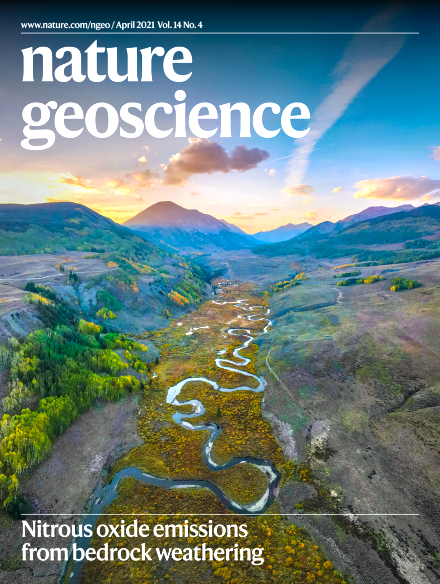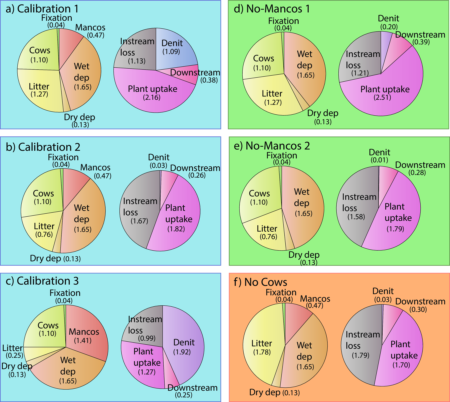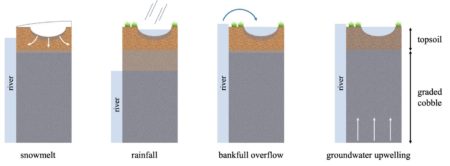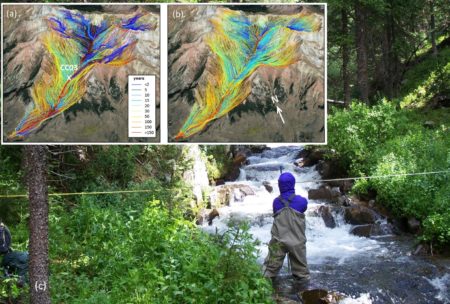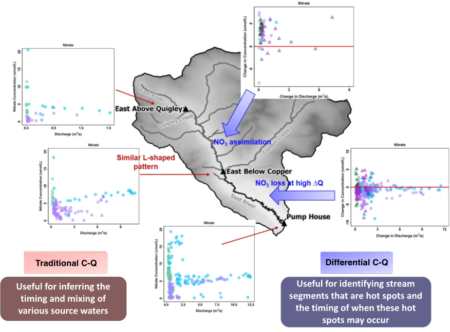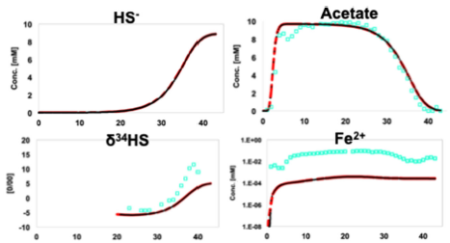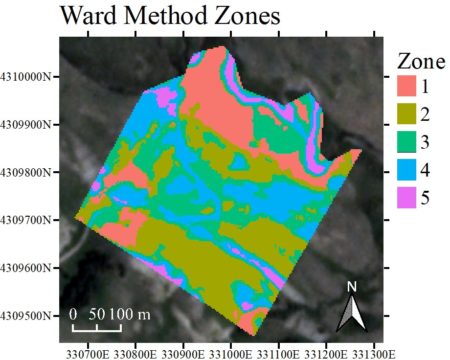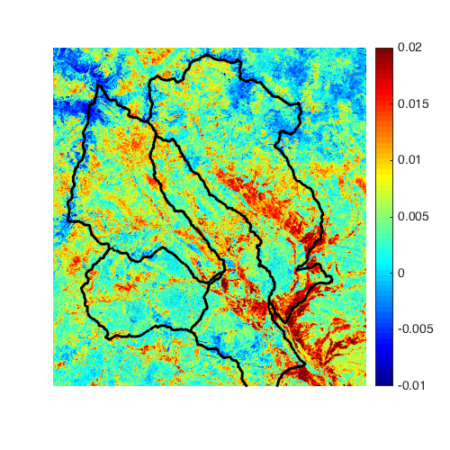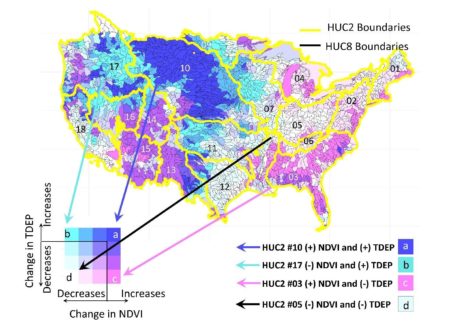
Groupings and directionality of vegetation and nitrogen deposition changes show spatial trends across the CONUS that explain instream nitrogen signals and exports. Image courtesy of Newcomer et al. (2021)
Watershed conditions around the world are changing in response to human activities. Indicators of watershed conditions can be streamflow measurements, river chemistry, and landscape characteristics, such as vegetation productivity. In-stream nitrogen (N) concentrations or exports (flow delivering N downstream) is a potential indicator of watershed conditions because of its relationship to landscape biogeochemical cycles, and is important because of the potential to exacerbate hypoxic conditions along coastal zones.
Our work provides an updated conceptual model for understanding watershed N retention conditions in response to atmospheric deposition patterns and watershed mechanisms. In particular, we utilize the wealth of publically-available continental US scale stream data from the US Geological Survey to demonstrate how watersheds can respond, recover, or transition to a new steady-state following atmospheric N-deposition.
Summary
Patterns of watershed nitrogen (N) retention and loss are shaped by how watershed biogeochemical processes retain, biogeochemically transform, and lose incoming atmospheric deposition of N. Loss patterns represented by concentration, discharge, and their associated stream exports are important indicators of integrated watershed N retention behaviors. By synthesizing changes and modalities in watershed nitrogen loss patterns based on stream data from 2200 U.S. watersheds over a 50 year record, our work revealed two patterns of watershed N-retention and loss. One was a hysteresis pattern that reflects the integrated influence of hydrology, atmospheric inputs, land-use, stream temperature, elevation, and vegetation. The other pattern was a one-way transition to a new state. We found that regions with increasing atmospheric deposition and increasing vegetation health/biomass patterns have the highest N-retention capacity, become increasingly N-saturated over time, and are associated with the strongest declines in stream N exports—a pattern that is consistent across all land cover categories. We provide a conceptual model, validated at an unprecedented scale across the CONUS that links instream nitrogen signals to upstream mechanistic landscape processes. Results of this study were published in Newcomer et al. (2021).
Citation
Newcomer, M. E., et al. (2021). Hysteresis Patterns of Watershed Nitrogen Retention and Loss over the past 50 years in United States Hydrological Basins. Global Biogeochemical Cycles. https://doi.org/10.1029/2020GB006777
